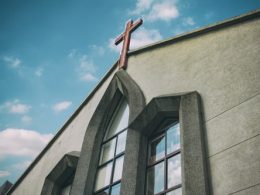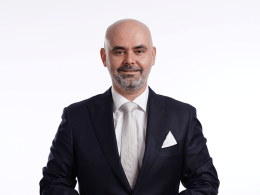Andalusia, Valencian Community and Castilla y León will be the first autonomies to impose curfews. The Board approved it this Thursday for Granada and its metropolitan area , where it will take effect on Sunday. The Valencian Government and the Castilian-Leon government announced it at the end of the day. For the rest of Spain it will have to wait. Although it is an option that both the central government and the majority of regional governments welcome, there is still no consensus on how to articulate it . The Interterritorial Council of the National Health System, which was held this Thursday, approved a package of measures to stop the epidemic – advanced on Wednesday by El PAÍS – and among them there is currently no restriction of night mobility.
In the absence of an agreement, the president of the Valencian Community, Ximo Puig, announced that he will approve the curfew in the next few days in his community from midnight to six in the morning. Likewise, the vice president of Castilla y León, Francisco Igea, assured that this region will order a curfew this Friday, and that it will apply from “nine or ten at night”, provided that the courts ratify it, Juan reported Navarrese. These two autonomies had requested this limitation before the council without it going ahead, so Igea considered the result of the Interterritorial meeting as “disappointing”.
For his part, the Minister of Health, Salvador Illa, explained after the meeting that his department is seeking consensus with the communities to approve this limitation of night mobility throughout Spain and that he is studying how to articulate it. “The optimal legal instrument for a curfew throughout the territory is the state of alarm. Legal services have been studying it for some time. But we will continue to value it and mature it in the council ”, said Illa.
Fernando Simón, director of the Center for the Coordination of Health Alerts and Emergencies, assured that the curfew is a tool that would help contain the virus: “I don’t know what legal format it will have to be given. But several spheres of transmission have already been controlled (between seasonal workers, in meat companies, it has been avoided in schools) and now it occurs in very specific environments. Limiting nighttime mobility could greatly favor transmission control because the most important sources are there ”.
The curfew, which is already being applied in France, aims to further limit social relations, but depending on the time, its repercussions can vary greatly. According to Ildefonso Hernández, spokesperson for the Spanish Public Health Society (Sespas), it has been observed that this type of measure can reduce the reproduction rate by 18%. “But these are studies from very different countries, you have to adapt them to the context. I suppose that the autonomous communities will have data showing where the greatest transmission takes place to limit those hours ”, he adds.
The epidemiologist Javier del Águila points out that the key to knowing its impact is the time at which the curfew is set, something that is not yet clear. Granada, the only Spanish capital that has already decreed it, has imposed it since 23.00. “From this time it can have an effect for large bottles, parks, because bars and restaurants were already closed by that time in many communities with great incidence. If it is brought forward at 9:00 p.m. or 10:00 p.m., it would have a more radical impact, because it not only affects what you do at dawn, but you limit dinners and meetings, ”he says. Although it may seem like a very drastic measure, Del Águila believes that the sooner it is taken, the more effect it will have: “In the first wave, the doubts about home confinements, due to their radical nature, led us to postpone them and it was worse.”
What the inter-territorial council did approve is the new package of measures to deal with the epidemic. All the communities voted in favor, except the Basque Country and Madrid, which abstained in the absence of having a definitive document. “We do not oppose the alert document but we do not support it either because it is four months late, it should have been prepared when the state of alarm ended,” says a spokesperson for the community governed by Isabel Díaz Ayuso.
These measures establish a panel with eight main indicators and 20 secondary indicators that place towns with more than 10,000 inhabitants at four risk levels. The high and extreme risk, which includes a cumulative incidence rate in the last 14 days of more than 250 cases per 100,000 inhabitants, includes assessing the closure of all non-essential establishments at 11:00 p.m. and the possibility of closing the interiors in bars and restaurants or reduce its capacity to a minimum.
If these indicators are applied to the means of the autonomous communities, only six would get rid of the highest restrictions: Balearic Islands, Canary Islands, Cantabria, Valencian Community, Extremadura and Galicia. All others present a high or extreme risk. But once it is published in the BOE – “in the next few days”, according to Simón – it will be the regional governments that will have to assess the risk of each of their territories and apply the measures that have been agreed upon, as well as define the geographic scope where they are imposed.
Risk criteria
Among the criteria to establish the risk of each municipality, two blocks are evaluated: one that measures the transmission of the virus – through six statistics: the cumulative incidence per 100,000 inhabitants in 14 days and in seven, these same measures but referring to the population older than 65 years, the percentage of positivity of the diagnostic tests and the percentage of cases with traceability – and another the care capacity through the occupation of beds in the ward and in the ICU.
Each of these metrics is assigned a value. For example, the extreme risk threshold is above 250 cases at 14 days; 125 to one week (figures that go down to 150 and 75 in the case of those over 65); more than 15% positivity in the tests and less than 10% traceability, that is, only the contact of 10 out of 100 positives, or less, is known. In the care block, the maximum risk is reached when 15% of beds occupied by covid patients on the ward and 25% in intensive care are exceeded. When a territory has two or more indicators from the first block above these levels and at least one from the second, it is considered to be at extreme risk.
Whatever the level, the measures imply the closure of nightlife. For extreme risk, there are no concrete measures: the document recommends that all those of level three be applied and other additional measures be studied which, if necessary, would have to be carried out by applying the alarm state. At the third level, people are recommended not to leave their homes except for necessary measures, perimeter confinement can be assessed, teleworking is advised whenever possible, limiting social gatherings to a maximum of six people. In the hospitality industry, in addition to assessing closings at 11pm and indoor closings, a 75% outdoor capacity limitation is imposed and a limit for the admission of customers at 10pm, closing at 11pm. The measures are relaxed as the level of risk is lowered. In the second one, meetings of 10 people and opening of 50% interior capacity in hospitality are allowed.
In total, there are almost a hundred measures at each of the three levels that affect all social life, sports, recreational and religious activities.









